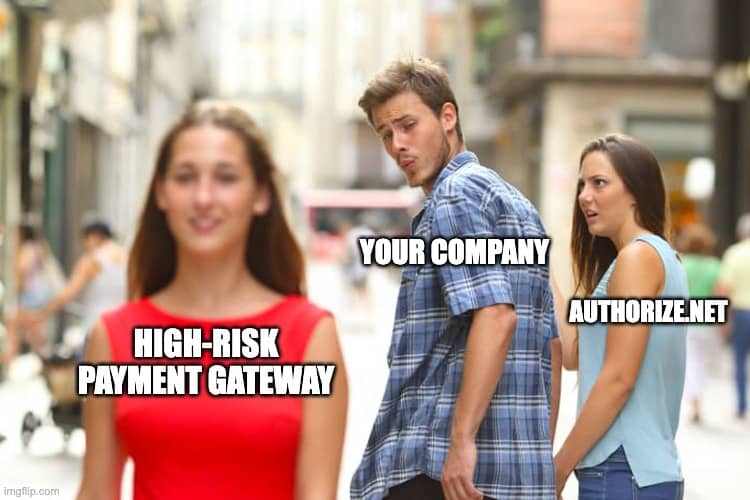CVV Codes: How to Bypass Them & Sites That Don't Require Them: 2023 Edition

Have you ever wondered how to make a payment without a CVV code? Or have you ever asked yourself why CVV codes exist and are necessary? If you’re curious about how to bypass CVV codes and are unsure why you or your customers have to use them, this guide will fill you in on why CVV codes exist and how they can protect you and your customers from credit card fraud.
Table of Contents
- What is a CVV Code on a Debit or Credit Card?](#h-what-is-a-cvv-code-on-a-debit-or-credit-card)
- CVV Codes for Different Credit Cards
- About CVV Codes
- Three Types of CVV Codes
- CVV1
- CVV2
- Dynamic CVV (also called iCVV)
- How Does a CVV Code Protect Your Account?
- Card-Present Transactions
- Card-Not-Present Transactions
- Benefits of a CVV Code
- How to Make a Payment Without a CVV Code: Security Issues
- Is it safe to Give a CVV Code During a Transaction?
- Are CVV Codes Related to PINs?
- Can CVV Codes Offer Complete Protection Against Fraud?
- How to Make a Payment Without a CVV Code
- Partner with Zenti
What is a CVV Code on a Debit or Credit Card?
If you’ve ever noticed a three- or four-digit number on your credit card, you’ve found the CVV code. An acronym for Card Verification Value, a CVV code is a security feature that helps prevent identity theft, scams, and credit card fraud.
Where is the CVV code located, and how can you find it? The answer depends upon your card type because each significant credit card uses a different format for its code.
CVV Codes for Different Credit Cards
For VISA, Mastercard, and Discover, the standard CVV number is a three-digit number printed next to the white signature panel on the back of the card. On American Express cards, the CVV is a four-digit code printed on the front of your card, above your account number on the right side.
Each credit card has two CVV codes, one printed on your card (and used for in-person purchases) and one encoded within your card’s magnetic strip and used for card-not-present purchases.
According to the credit card company, CVV codes are also referred to by different acronyms. Here they are at a glance:
- VISA: CVV2
- Mastercard: CVC2
- Discover: CID (Card Identification Number)
- American Express: CID
- Debit cards: CSC (Card Security Code)
If you’re concerned about customers learning to bypass CVV codes, Zenti can give you the tools you need to ensure your customer transactions are safe and secure. As a nationwide leader in providing [high-risk credit card processing for merchant accounts, Zenti can help you get approved so you can take a wide variety of payments, including all major credit cards, even if you’ve been denied payment processing services in the past. With the extra security you’ll get from Zenti; you won’t have to worry about customers learning how to bypass CVV codes.
About CVV Codes
If you’re wondering how to make a payment without a CVV code, it helps to understand when and why they were created.
CVV codes were invented in 1995 by a UK-based Equifax employee named Michael Stone. Initially, the CVV was an alphanumeric card verification code with 11 characters. Still, fortunately for consumers and merchants, the UK Association of Payment Clearing Service revised it into a three-digit number. Mastercard was the first credit card to use this card security code in 1997, followed by American Express in 1999 and VISA in 2001. These major credit card companies rushed to implement CVV codes primarily because of the burgeoning growth of online retailers and growing cardholder concerns about hackers and scammers.
Three Types of CVV Codes
These are the three main types of CVV codes (although they may go by different names according to each credit card company):
CVV1
A CVV1 code protects all types of “card-present” transactions where the physical card is present. In these transactions, the number or chip is entered, or the magnetic strip is swiped.
CVV2
A CVV2 code validates “card-not-present” transactions, referring to online purchases, phone purchases, cash advances, and other remote transactions. As the name implies, “card-not-present” refers to payments made when the physical credit card isn’t present. This can sometimes be done via a payment gateway.
Dynamic CVV (also called iCVV)
Recent technology, known as the dynamic CVV (or iCVV), is used in chip cards and contactless transactions, such as those with mobile apps like Affirm.com. The dynamic CVV can include a tiny electronic screen in the back of the card with a code that changes every 30 or 60 minutes, or it can involve sending the customer a text or email with a unique one-time PIN, which can be used only for a few hours. Dynamic CVV is still a new technology, so it’s not as widely used as CVV1 and CVV2.
How Does a CVV Code Protect Your Account?
When discussing how to make a payment without a CVV code, it’s essential to clarify precisely what CVV codes do and how they can protect your credit card and merchant account.
Essentially, a CVV code is all about security, which is a significant concern for any merchant or cardholder. According to statistics from Juniper Research, global e-commerce merchants were on the course to lose as much as 20 billion USD in 2021 due to criminal activity. This type of activity can include all kinds of credit card fraud, including identity theft, stolen cards, phishing (sending fake “company” emails to get personal information), computer hacks, and fraudulent chargebacks (bank-issued credit card returns). Toward that end, CVV codes were the first significant line of defense for credit cards in the internet era, and they’re still adequate for a wide range of security issues.
Here’s how CVV codes work: Each credit card has a unique, three-digit (or four-digit, in the case of American Express) number printed on the card. The CVV is entered to validate the customer’s identity when a customer purchases and initiates a transaction.
Essentially, credit cards go through a two-step authentication process that uses two pieces of information — the credit card number and the CVV — to confirm that the purchaser is indeed the actual cardholder.
It helps explain how CVV codes are entered differently for in-person, online, or remote transactions.
Card-Present Transactions
In card-present transactions, the CVV code gets input into the card machine at checkout in one of three ways:
- Entering the number in the credit card machine for a manual transaction, such as when a magnetic stripe no longer works
- Swiping the magnetic strip in the card reader
- Inserting the chip side of the card into a chipping machine
In card-present transactions, the CVV number automatically verifies that the physical credit card is in the correct cardholder’s possession.
Card-Not-Present Transactions
When consumers initiate a card-not-present transaction, the merchant either asks for the CVV code (if the purchase is via phone) or the customer enters the CVV number online during the checkout and payment process.
Once the CVV number is entered, the credit card payment system automatically recognizes the card/cardholder match as genuine or rejects the purchase if it’s not. That’s why payments get declined if the wrong CVV code gets entered.
At this point, the CVV number has served its purpose. It’s been used to verify the person presenting the card as the valid cardholder.
Are CVV numbers stored in a transaction? The answer is no. CVV numbers can’t be held at any point in the transaction, nor is the CVV saved or kept when entered online. Even if a merchant stores your credit card information on file, they won’t be able to store your CVV. This adds another layer of security, protecting the merchant and credit card company from loss.
Are you worried about protecting your high-risk merchant account? With Zenti, you won’t have to worry about customers learning how to bypass CVV codes because Zenti can help you get safe, secure payment processing services that protect and streamline all your merchant transactions, whether they’re made in-person or through your online store.
Benefits of a CVV Code
Can scammers learn how to make a payment without a CVV code? It’s not likely. CVV codes offer a valuable safety feature that:
- Authenticates cardholder identity during card-present and card-not-present transactions
- It prevents hacking and tracking because the code is never stored
- It eliminates the need for showing secondary identification, such as a driver’s license
- It helps protect cardholder accounts from scammers
- It helps protect cardholders from identity theft
Are you worried about customers learning how to bypass CVV codes? Consider talking to a Zenti expert about how our roster of merchant account services can add extra layers of protection to your payments and transactions. Zenti can get you the approval you need so you can take all major credit cards, plus a mobile app and e-check payments, seamlessly and safely without interruptions or security issues to worry about.
How to Make a Payment Without a CVV Code: Security Issues
If you’re still worried about fraudsters figuring out how to make a payment without a CVV code, here are three questions that cardholders often ask:
Is it safe to Give a CVV Code During a Transaction?
The answer is yes. It’s not only safe but also necessary. Fortunately, credit card processors use security protocols to ensure safe transactions. For example, reputable merchants use Secure Sockets Layer (SSL) technology for online purchases, a security feature that uses an encrypted link certified via a digital certificate. The best way to ensure a safe investment is to make sure you’re purchasing from a site protected by SSL and powered by HTTPS technology. This type of protection makes it exceptionally difficult for a customer to figure out how to make a payment without a CVV code, even for remote purchases.
Are CVV Codes Related to PINs?
Not confusing a personal identification number (PIN) with a CVV code is essential. PINs are unique codes cardholders choose when setting up their card account. PINs aren’t related to CVV codes in any way, except that each one is an extra layer of security protection.
Can CVV Codes Offer Complete Protection Against Fraud?
Unfortunately, no. CVV codes aren’t fool-proof. CVV codes are printed on the card, plainly visible.
If a credit card is stolen, scammers can access the CVV code and the credit card account number. That’s why it’s crucial to report lost or stolen credit cards immediately to the issuing credit card company. As soon as it’s said, the card issuer immediately stops payment on all transactions for the card and issues the cardholder a new card to replace it. Additionally, your card issuer carefully monitors and removes any fraudulent charges on your card, so cardholders aren’t liable.
How to Make a Payment Without a CVV Code
It’s only natural to wonder how to make a payment without a CVV code. But the truth is that you usually can’t, except in some instances. The only way to clarify this is to explain how to bypass CVV codes for online purchases.
The best example of bypassing CVV codes is to shop with an online retailer that doesn’t require one. As of this writing, you might still find some online retailers that don’t ask for CVV codes, but these numbers are rapidly decreasing as incidences of fraud increase each year.
It’s worth mentioning here that some people cite virtual credit cards as examples of how to bypass CVV codes. Still, an actual virtual credit card issued by a legitimate bank or credit card company also has a CVV code attached, just like a physical credit card.
A virtual credit card (VCC) only exists in a virtual form, so there’s no physical card involved. It’s linked to an already-existing credit card account but has a different, random number. This random account number offers extra security, as it’s difficult for scammers to detect. Plus, cardholders can use it just once or temporarily.
Legitimate virtual credit cards are issued by online banks or credit card companies. Virtual credit cards come in both single- and multi-use formats, and cardholders can choose a preferred expiration date and even set a spending limit if desired.
For merchants, a virtual credit card acts exactly like a physical credit card, so there’s no difference when the cardholder initiates or completes a transaction. For customers, virtual cards may offer more control over finances and added security in some instances. Still, a legitimate, bank-issued virtual credit card is not an example of how to bypass CVV codes.
Still, concerned about hackers learning how to make a payment without a CVV code? If you’re concerned about customers figuring out how to bypass CVV codes, Zenti can help you get the most secure, streamlined payment processing services for your high-risk merchant account. With Zenti, you can get approved for all major credit cards, plus e-check and mobile app payments, even if you’ve previously been denied these vital merchant account services. And with Zenti, you can rest assured that every transaction is protected with the highest security protocols to keep your business and customers safe from scammers.
Partner with Zenti
If you’re ready to boost revenues and increase customer satisfaction, contact Zenti to find out how we can help you get the payment processing you need for a successful business.
Read Next

Find out whether Authorize.Net works for high risk merchants, what restrictions you might face and how to get approved.

Get expert advice on selling CBD products on Shopify, including compliance tips and setting up secure payment options.

Find out why Square may deactivate merchant accounts and steps to resolve issues and maintain uninterrupted payment services.
Need a High-Risk Merchant Account?
Disruption-free payment processing at the best price for your situation, guaranteed.
Get Free Guidance Now!